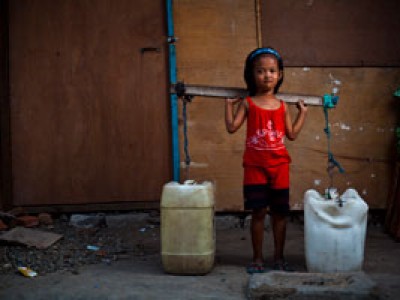
Will Eliminating Extreme Poverty Require a Miracle?
How big is the problem of extreme poverty? Three billion people worldwide and 1 billion children deep. But despite the size of those numbers, many people at Compassion believe that we can eliminate extreme poverty in our generation, that we can remove or utterly destroy it.
You might think we’re “drunk on the spirit,” that our goal is unrealistic, completely irrational or even not Biblical, and I will be honest with you, I thought it was out of I thought of it as an impossible task, too.
Fewer Children Are Dying
Good news from the government is pretty rare. Good news in the media is even more rare. So when I read this headline the other day, I smiled: “WHO sees good progress on UN health goals for poor.”
According to a recent study by the U.N.’s World Health Organization, good progress is being made on health-related Millennium Development Goals (MDGs).
- Fewer children are dying.
- The estimated percentage of underweight children under 5 has dropped.
- New HIV infections have declined.
- Existing cases of tuberculosis are declining.
- The world is on track to achieve the MDG target on access to safe drinking water.
Let’s just pause for a moment to let this sink in. We are making progress. Let’s celebrate this!
Of course, this doesn’t mean we can slow down in our fight against global poverty. If anything, seeing progress should motivate us to work even harder. And, as has been mentioned around here before, eliminating extreme poverty is just a matter of priorities.
The annual income of Christian American churchgoers is $5.2 trillion. The amount of money needed to end global poverty is about $74 billion a year. … Basically, 1 percent of our annual income a year is what is needed to end extreme poverty.
So the question is, what are your priorities?
Counting Malaria Out
At the center of Riaciina village in Kenya lies a semi-permanent house, traditionally constructed. The walls of the house are made of mud and smoothly smeared with cow dung. The roof is thatched with iron sheets. There is a big gap between the mud and iron sheets. Mosquitoes penetrate freely day and night. 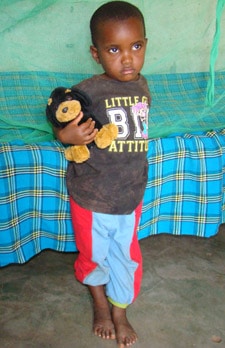
This is the home of Amina, a toddler enrolled in the local Child Survival Program (CSP). At the back of the homestead lies waste from the nearby kitchen. On the other side of the home are thick bushes of indigenous trees.
As the CSP specialist visited the mother, mosquito bites could be noted on the face of the child. Throughout the session, the TEEEE! TEEEE! sound of mosquitoes could be heard.
In some countries, mosquitoes are just nuisance, but in Riaciina, mosquitoes pose a deadly threat. Mosquito-borne malaria is the major killer disease in the area.
Riaciina village lies in the semi-arid part of Kenya on the extreme southern slopes of the largest mountain in Kenya, Mount Kirinyaga. The occupants are mainly the Ambeere and the Akaamba people whose primary work is farming and fishing. (more…)

My First Compassion Sunday: Crying for Compassion
My tears embarrassed me. I didn’t want my friends to think I was trying to guilt them into sponsoring. I didn’t want to detract from our purpose in showing the exciting work Compassion is doing. But God used my tears.
As I pulled myself together, I realized I wasn’t the only one in the church crying.
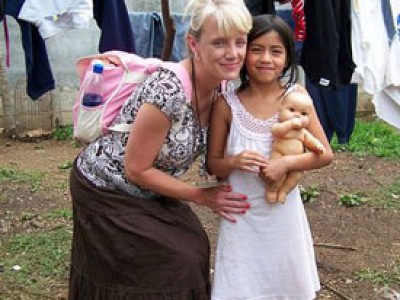
Compassion Sunday Is Child Sponsorship Taken to the Next Level
As soon as I completed my Advocate training, my first thought was to host a Compassion Sunday at my church. I was on fire, passionate, and thought that was the obvious next step. I was wrong.

How Is Compassion Sunday Like Putting Mentos in Diet Coke?
When you put a Mentos mint into a bottle of soda it explodes like a volcano, just like an explosive phenomenon taking place all over the country on behalf of children in poverty. In both cases this explosive phenomenon is about multiplication.
H is for Hunger
Here’s a sad bedtime story: One out of seven people in the world go to bed hungry every night, victims of extreme poverty.
You can help them have a happier ending – compassion.com/youcan
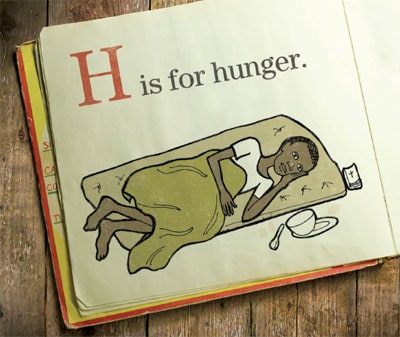
Preventable Causes of Death
Diarrhea. Unclean water. Measles. Pneumonia. Tuberculosis. Malaria. Every day 25,000 children younger than 5 die from mostly preventable causes. Why?
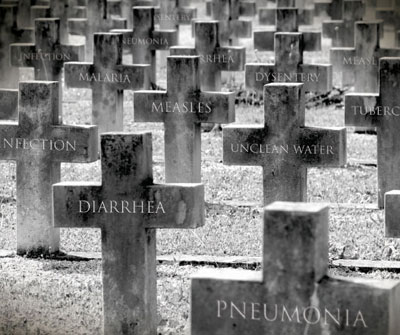
Because they live in poor countries that aren’t a priority to developed nations. But they’re still a priority to God.
And they can be yours, too – compassion.com/youcan
AIDS Crisis in Africa: What Compassion Ghana Is Doing About It
Compassion Ghana is intensifying its fight against the spread of HIV and AIDS with Compassion’s AIDS Initiative. Among the many activities aimed at achieving this objective is education.
Florence Sena Amponsah is a Partnership Facilitator for 12 Compassion-assisted child development centers. She has been with Compassion Ghana for one year now. She is involved with a pilot program to train youths to educate their peers about HIV and AIDS.
“When children get to a certain age, around the teenage years, they tend to relate more to their peers and their siblings who are closer to them in age than they would from their parents or teachers or adults in general.
“Parents and adults have the inclination to be uncommunicative on issues concerning sex, but children get to an age where they need answers to many things happening to their bodies. When they do not get the responses they require, they turn to their peers for information.
“Most times the information shared among peers is by and large wrong and detrimental.
“Considering these facts, we believe that when the capacity of children whom we call ‘Peer Educators’ is built up by equipping then with right knowledge and correct information, then these children can carry the message across to other children, their communities, their churches and even in their schools.
“What they are learning are most of the general things they need answers to at their developmental stage, which they are not able to openly talk about.
“The Peer Educators Training is in the pilot phase for 12 child development centers, presenting two children from each. So there are 24 children involved in the pilot.
“From what I have seen so far, I can confidently say that the program is going to make a great impact. The group of children here are highly intelligent, and judging from their participation, I can tell they are learning a lot as they find the topics to be relevant to them.
“We chose HIV and AIDS as the topic for the peer educators because HIV and AIDS is a disease which is threatening Africa. It has cut across many countries, and is a problem here in Ghana.
“We have orphans, we have people who have been infected with the disease, so we are building the capacity of these peer educators to carry the message.
“They are being taught how the disease is spread so that if they know, they will make informed decisions about themselves. At least they will know how to protect themselves.
“They are also being taught the need to care for other people who have the disease to help prevent discrimination, isolation and rejection.”
AIDS Crisis in Africa: Living HIV-Positive
My name is Azalea*. I live with my daughter. She is 10, in grade four and is second in her class. So, we are two people in the family. My husband passed away several years ago after a short disease. He was suffering from a liver problem.
We eat rice, millet pastry and beans. As we are only two, I cook once a day. After breakfast, I cook and we eat the meal at noon, and in the evening I reheat the leftovers and we eat.
We are living in an urban area. We have electricity and running water in the community, but only for those who can afford it. We also have a medical center in the neighborhood. Most people sell small items to feed their families.
I discovered my daughter was HIV-positive in 2005. She was suffering from severe chickenpox. The treating doctor suggested us to take an AIDS test. We agreed, and the child was declared HIV-positive.
I do not know how she got the disease, if it was during her birth or during the blood transfusion she got when she was very little.
My daughter does not yet know she is HIV-positive, but I will surely tell her. As I do not know how she will react, I am looking for the right moment to tell her.
I am also HIV-positive, but I do not know how and when I got infected. When the doctor discovered that my daughter was HIV-positive, he encouraged me to take the test and that was how I came to know.
I was very shocked when I found out. I was asking myself how I would live with the disease and how others would react.
Four years after being declared HIV-positive, I am still asking myself the same questions. (more…)
The History of Our AIDS Initiative
The Compassion AIDS Initiative has been around for five years. Yep, it’s our fifth anniversary this year!
And in those five years, we have made some incredible strides, taken some risks, and as a result have sustained the lives of more than 20,000 of our beneficiaries, caregivers and siblings.
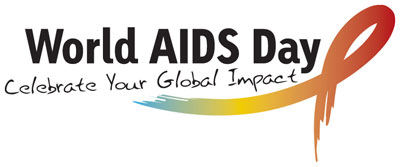
We began the AIDS Initiative because of an increasing awareness of the impact of HIV and AIDS, specifically in Africa. The virus had already done plenty of damage, and as our programs in Africa grew stronger, we were ready to embark on a new challenge — one that would have an enduring impact, give hope and save countless lives.
As Christians, we felt we had a mandate to do something more to impact the kingdom.
When we first began, the scientific community was still skeptical that Africans with AIDS could take the medicine that would keep them alive. While the sense of urgency was growing, commitments to fund the provision of antiretroviral therapy (ART) were not. (more…)
Why Should We Care About AIDS?
There are many sores in our society, but the one that plagues our world like no other is the AIDS pandemic. Those infected with HIV are treated like lepers and often ignored and shunned.
As the Body of Christ, caring about this disease, which is primarily spread through deviant behavior (though certainly not all the time), it is our chance to do the unexpected … to care for those infected with HIV, no matter the cause.
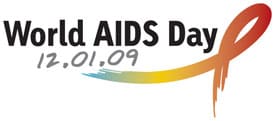 And with World AIDS Day next week, it’s as good a time as any to act like the person who came to save us.
And with World AIDS Day next week, it’s as good a time as any to act like the person who came to save us.
What Is AIDS?
Many people know the terms HIV and AIDS, and often use them interchangeably, and as a result, incorrectly.
HIV is a virus, the human immunodeficiency virus, one of the most persistent and complicated viruses of all time.
This virus causes the body to become immunodeficient, which means that it causes the body’s immune system to be weakened, which makes the body’s defense system not work as well as it could and as a result, become more susceptible to infections.
AIDS stands for acquired immune deficiency syndrome. AIDS is a result of HIV. It is the last stage of an HIV infection.
A person first gets HIV, and then later, usually years later, will develop AIDS.
A CD4 cell is a type of white blood cell sometimes called a T cell. A person is diagnosed as having AIDS when his or her CD4 cell count drops below a certain level, around 300 cells per millimeters cubed (mm3). The normal range is between 500-1,600 CD4 cells per mm3.
Over time, a person with HIV will lose these cells through destruction by HIV. Then that person will be more vulnerable to infections … opportunistic infections.
Without treatment, the opportunistic infections will eventually claim the life of a person infected with HIV. But treatment is available and it is called ART, which stands for antiretroviral therapy.
Because of the advent of ART, those who once were hopeless and waiting to die now have a second chance. But really why should we care about AIDS? (more…)


